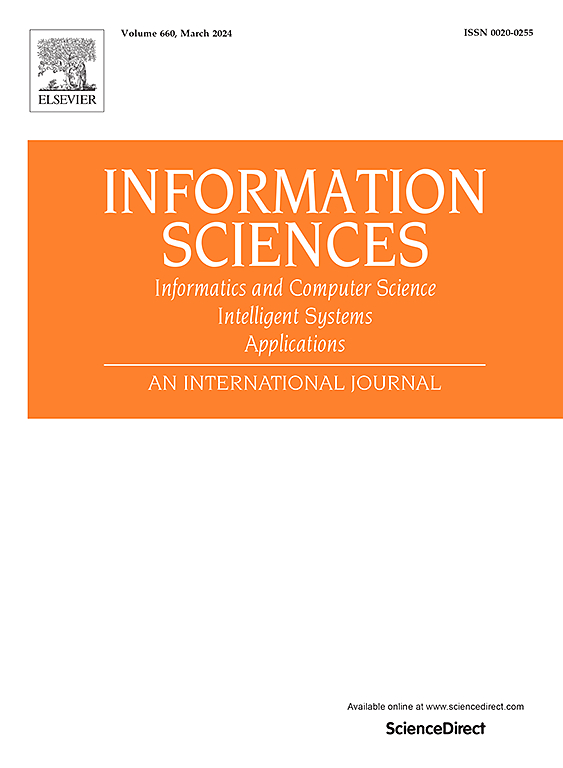带时间窗车辆路径问题的多目标边缘学习算法
IF 8.1
1区 计算机科学
0 COMPUTER SCIENCE, INFORMATION SYSTEMS
引用次数: 0
摘要
带时间窗的多目标车辆路径问题是近几十年来备受关注的问题。到目前为止,已经提出了各种各样的元启发式方法来解决这个问题。然而,设计有效的方法并非易事,在很大程度上取决于专家的知识。深度强化学习是近年来的一个研究热点,人们尝试了几种深度强化学习方法来解决具有对称距离和时间矩阵的多目标车辆路径问题。然而,由于复杂的交通条件,在现实场景中,两个节点之间的行驶距离和时间可能是不对称的。本文介绍了一种基于边缘的多目标学习算法(MOEL)来解决这一问题。该方法通过对单个神经网络模型进行训练来逼近问题的整个Pareto前。边缘特征,包括旅行距离和时间矩阵,被充分学习并用于构造高质量的解。将模型与三种最先进的深度强化学习方法(MODRL/D- el, PMOCO, EMNH)和五种元启发式方法(NSGA-II, MOEA/D, NSGA-III, MOEA/D-D, MOIA)进行比较。实际实例的实验结果表明,该模型显著优于所有竞争对手,其IGD和HV分别提高了99.80%和62.84%。此外,与深度强化学习方法相比,MOEL最大运行时间减少了88.65%,突出了其解决问题的效率和有效性。本文章由计算机程序翻译,如有差异,请以英文原文为准。
A multiobjective edge-based learning algorithm for the vehicle routing problem with time windows
The multiobjective vehicle routing problem with time windows has attracted much attention in recent decades. Until now, various metaheuristic methods have been proposed to solve the problem. However, designing effective methods is not trivial and heavily depends on experts' knowledge. As a research hotspot in recent years, a few deep reinforcement learning methods have been tried to solve the multiobjective vehicle routing problem with symmetric distance and time matrices. However, due to the complex traffic conditions, the travel distance and time between two nodes are probably asymmetric in real-world scenarios. This article introduces a multiobjective edge-based learning algorithm (MOEL) to tackle this issue. In this method, a single neural network model is established and trained to approximate the whole Pareto front of the problem. The edge features, including travel distance and time matrices, are fully learned and used to construct high-quality solutions. MOEL is compared against three state-of-the-art deep reinforcement learning methods (MODRL/D-EL, PMOCO, EMNH) and five metaheuristic methods (NSGA-II, MOEA/D, NSGA-III, MOEA/D-D, MOIA). Experimental results on the real-world instances indicate that MOEL significantly outperforms all competitors, improving IGD by up to 99.80% and HV by up to 62.84%. In addition, MOEL achieves a maximum runtime reduction of 88.65% compared to the deep reinforcement learning methods, highlighting its efficiency and effectiveness for solving the problem.
求助全文
通过发布文献求助,成功后即可免费获取论文全文。
去求助
来源期刊

Information Sciences
工程技术-计算机:信息系统
CiteScore
14.00
自引率
17.30%
发文量
1322
审稿时长
10.4 months
期刊介绍:
Informatics and Computer Science Intelligent Systems Applications is an esteemed international journal that focuses on publishing original and creative research findings in the field of information sciences. We also feature a limited number of timely tutorial and surveying contributions.
Our journal aims to cater to a diverse audience, including researchers, developers, managers, strategic planners, graduate students, and anyone interested in staying up-to-date with cutting-edge research in information science, knowledge engineering, and intelligent systems. While readers are expected to share a common interest in information science, they come from varying backgrounds such as engineering, mathematics, statistics, physics, computer science, cell biology, molecular biology, management science, cognitive science, neurobiology, behavioral sciences, and biochemistry.
 求助内容:
求助内容: 应助结果提醒方式:
应助结果提醒方式:


